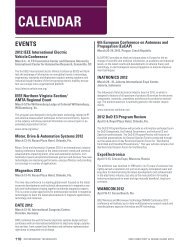2011 EMC Directory & Design Guide - Interference Technology
2011 EMC Directory & Design Guide - Interference Technology
2011 EMC Directory & Design Guide - Interference Technology
You also want an ePaper? Increase the reach of your titles
YUMPU automatically turns print PDFs into web optimized ePapers that Google loves.
JAVOR<br />
is measured. Since the potential at the<br />
base of the rod is taken with respect to<br />
the counterpoise, if the counterpoise potential<br />
is disturbed, the measurement<br />
will be off. This is key in designing the<br />
proper set-up. The proper counterpoise<br />
configuration is the main subject of the<br />
following section.<br />
EXPERIMENTAL VERIFICATION<br />
First, the problem. The traditional<br />
Figure 3a set-up yields the cable length<br />
(and chamber size) dependent resonances<br />
of Figure 4b. Figure 4a is the<br />
rf potential on the radiating wire for<br />
comparison (stimulus vs. response).<br />
Since the source potential is constant<br />
with frequency, we expect the<br />
measured radiated field to be likewise,<br />
based on the analytical section. Therefore<br />
we recognize that the Figure 4b<br />
performance is indicative of a problem<br />
with the test set-up. This observation<br />
and the description of the traditional<br />
set-up point out two problems with [4].<br />
[4] doesn’t show the radiating source<br />
potential, only the radiated fields.<br />
Departures from a flat response are<br />
observed over the entire 2-30 MHz<br />
band. It is not clear in [4] how much of<br />
the peaks are due to problems in the<br />
rod antenna set-up vs. problems in the<br />
radiating element. Secondly, Weston in<br />
[4] uses ferrite sleeve lining over the<br />
coax connection in both the -461E and<br />
-461F set-ups. None of the other the<br />
other standards besides MIL-STD-<br />
461F require such treatment. Weston<br />
displays a knowledge of the problems<br />
with MIL-STD-461E in so doing,<br />
but for the purposes of comparing<br />
and contrasting MIL-STD-461E and<br />
MIL-STD-461F methods, one cannot<br />
use ferrite sleeve lining in the MIL-<br />
STD-461E set-up because there is no<br />
requirement to do so.<br />
The source of the resonance problem<br />
is the reactive impedance between<br />
counterpoise and chamber<br />
ground. This consists of the capacitance<br />
between the counterpoise and<br />
the chamber surfaces, as well as the<br />
parallel inductance of the coaxial<br />
transmission line shield acting as a<br />
standards<br />
ground strap between counterpoise<br />
and chamber. Both the capacitance<br />
and inductance will be chamber specific.<br />
The counterpoise is one plate of<br />
a capacitor working mainly against<br />
the floor; the effective plate size is the<br />
arithmetic average of the counterpoise<br />
area and the floor area. Since the size<br />
of chambers is uncontrolled (above<br />
some minimum), the capacitance will<br />
be larger than some minimum value,<br />
but otherwise unconstrained. Note<br />
that the capacitance depends mainly on<br />
the floor size; even if the counterpoise<br />
area approaches zero, the floor size<br />
sets the effective plate size. The length<br />
of coax cable interconnect is clearly<br />
dependent on room size and layout,<br />
and is even less controlled than the<br />
capacitance. Measurements made in<br />
the <strong>EMC</strong> Compliance chamber showed<br />
capacitance of 50 pF and inductance<br />
close to 0.5 uH. And that was using the<br />
MIL-STD-461F configuration less the<br />
rf sleeve; the inductance would have<br />
been much higher with a long length<br />
of coax. For the values measured, the<br />
interferencetechnology.com interference technology 75




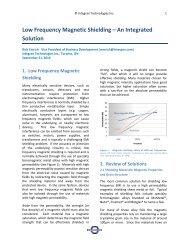

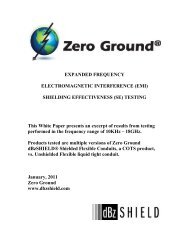
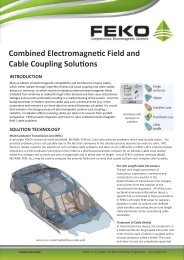



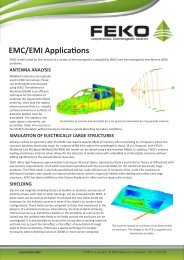
![[ thursday ] morning sessions 8:30 am-noon - Interference Technology](https://img.yumpu.com/23176841/1/190x247/-thursday-morning-sessions-830-am-noon-interference-technology.jpg?quality=85)
